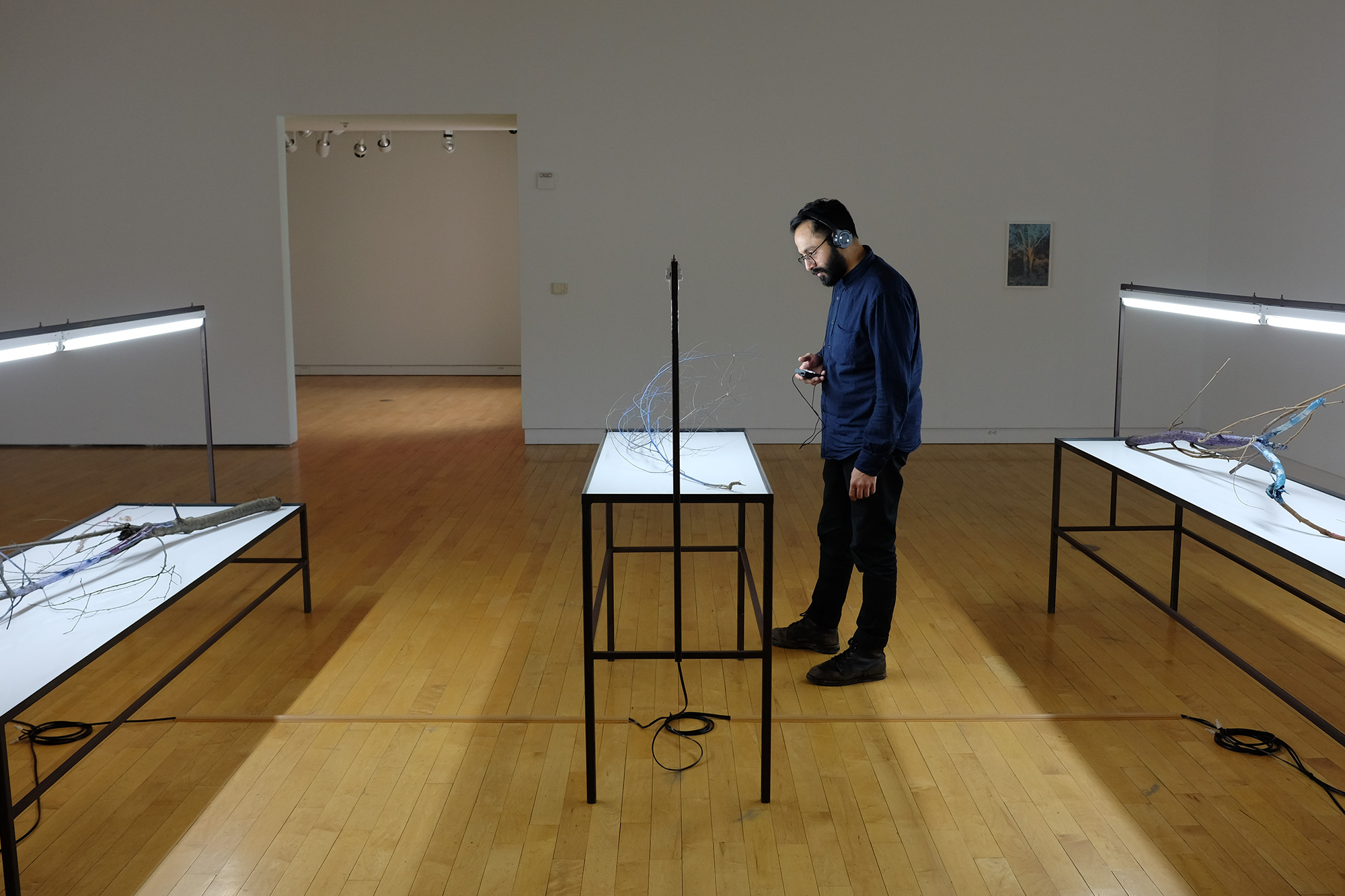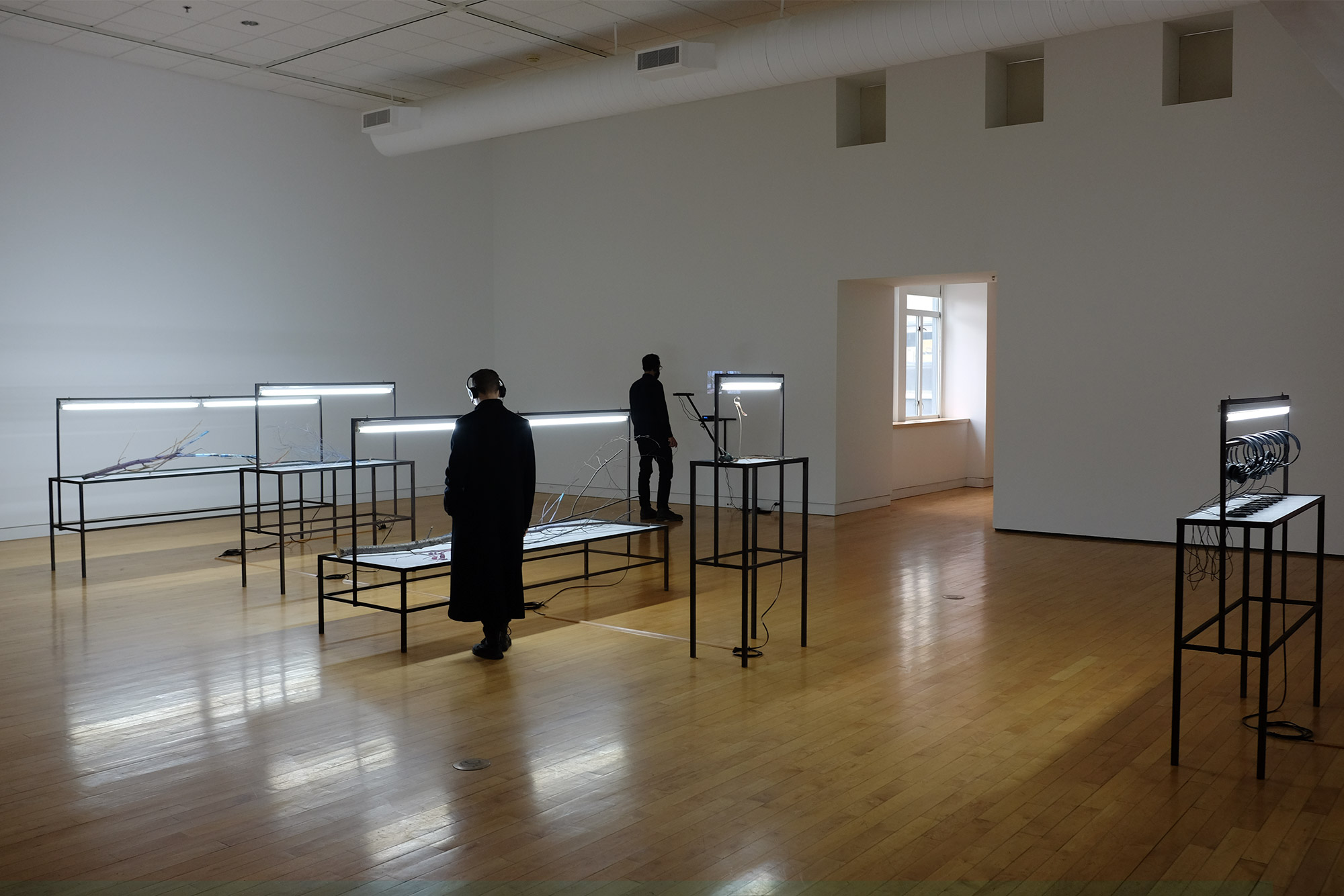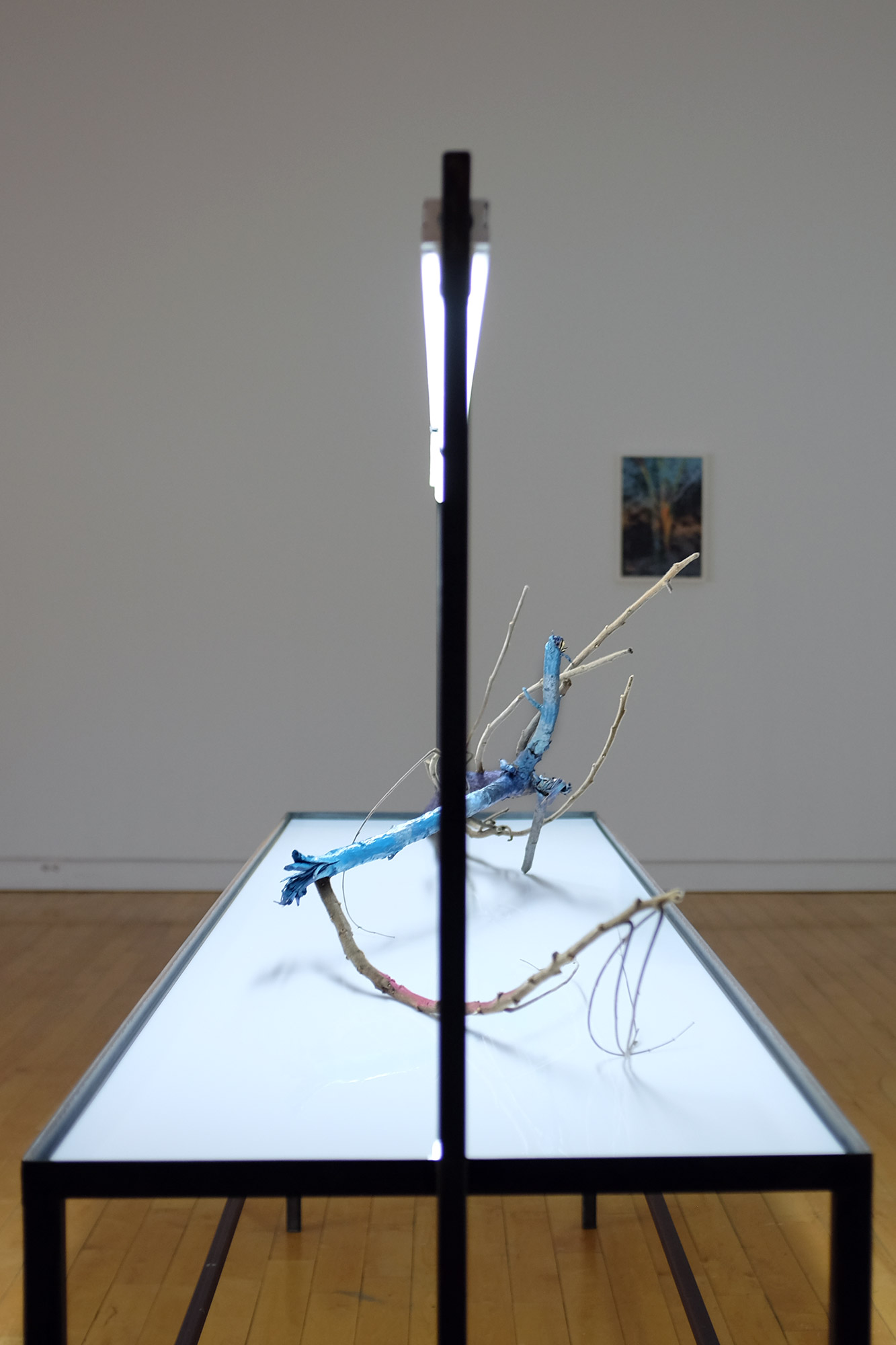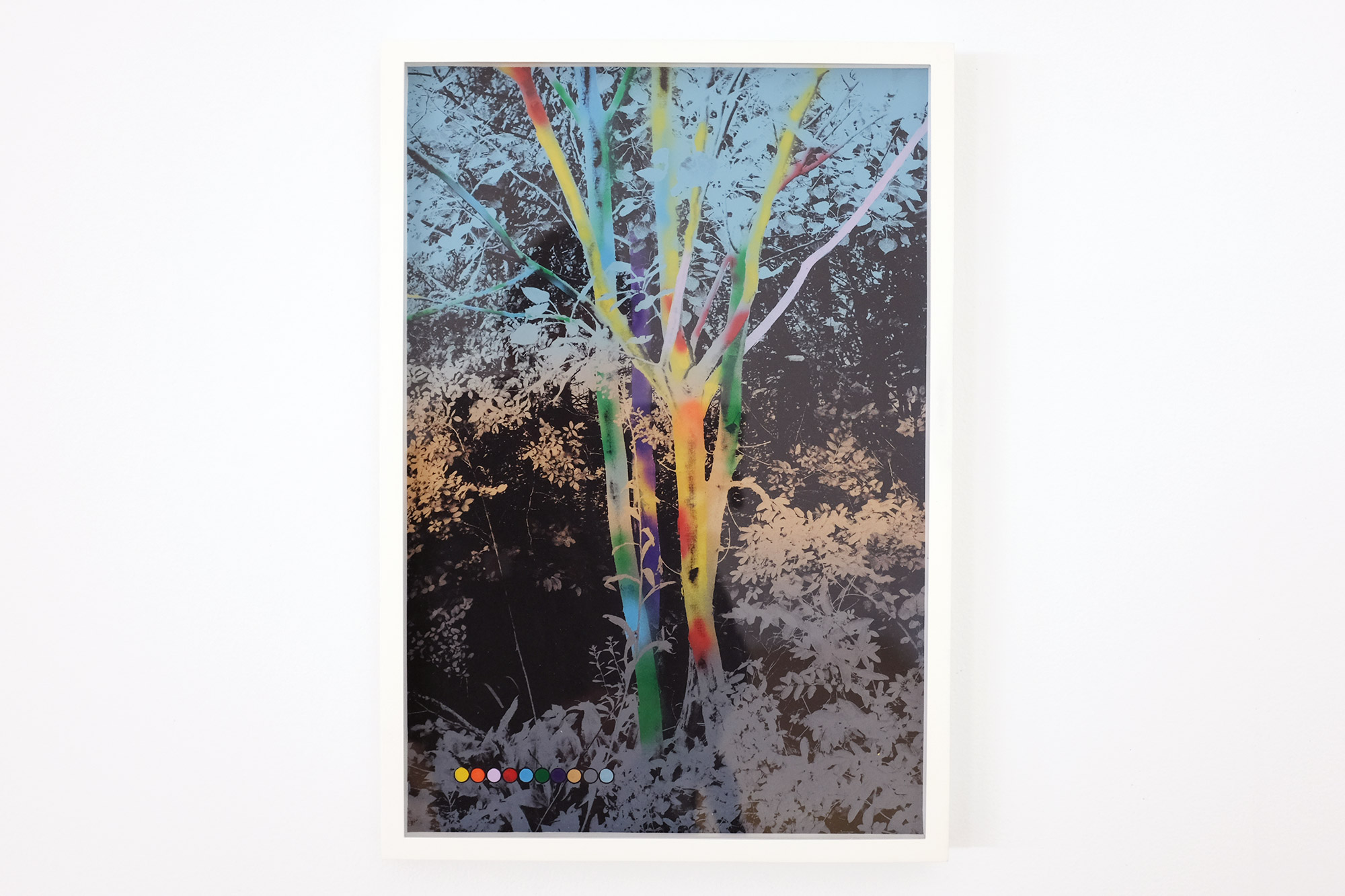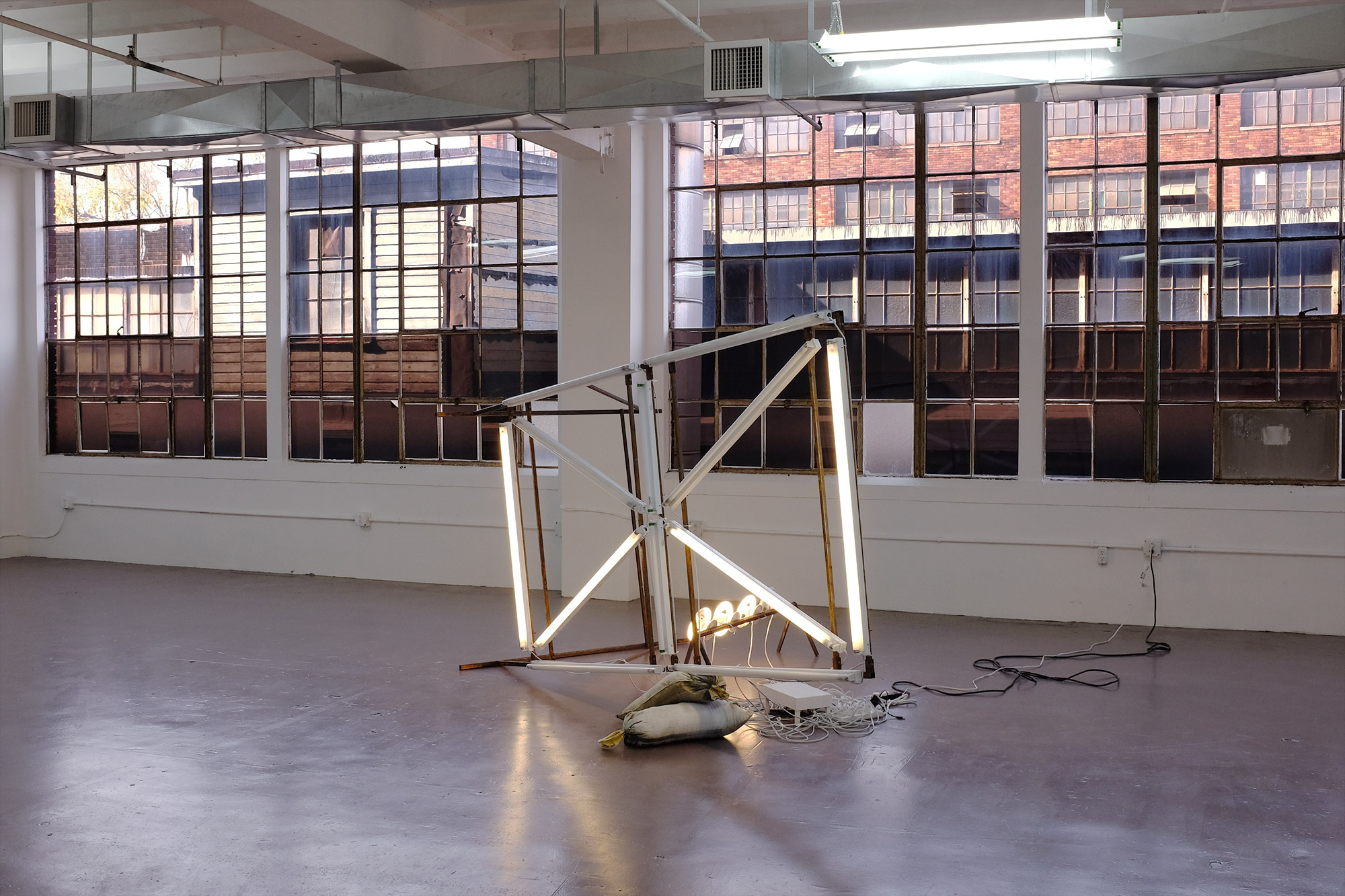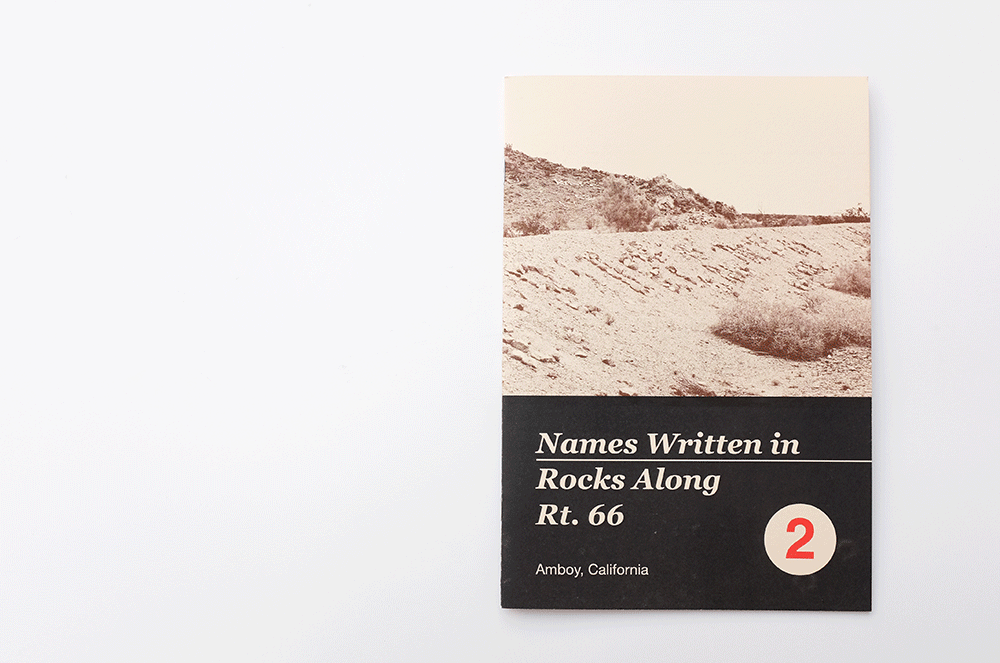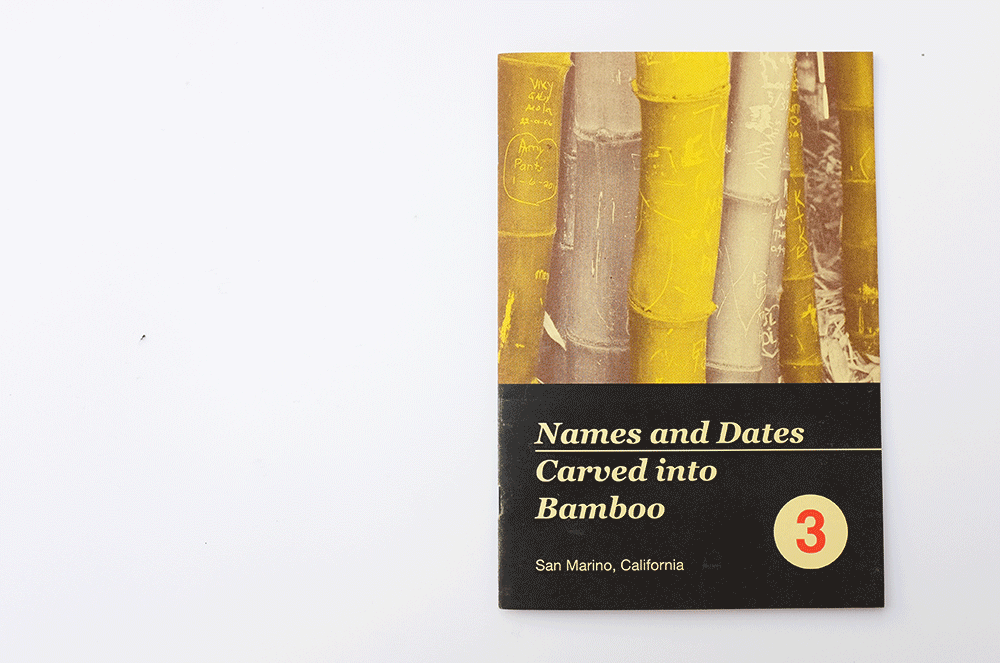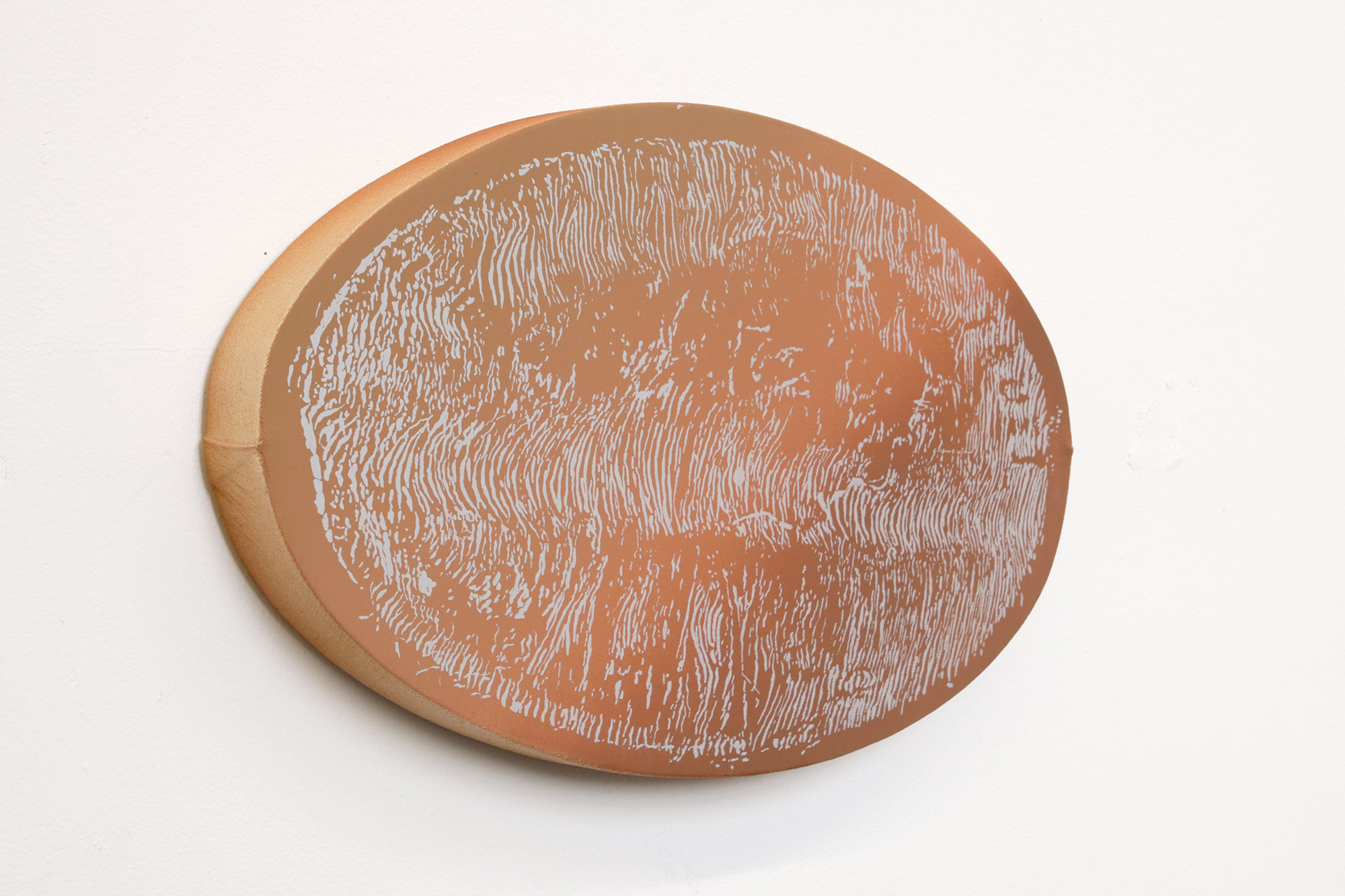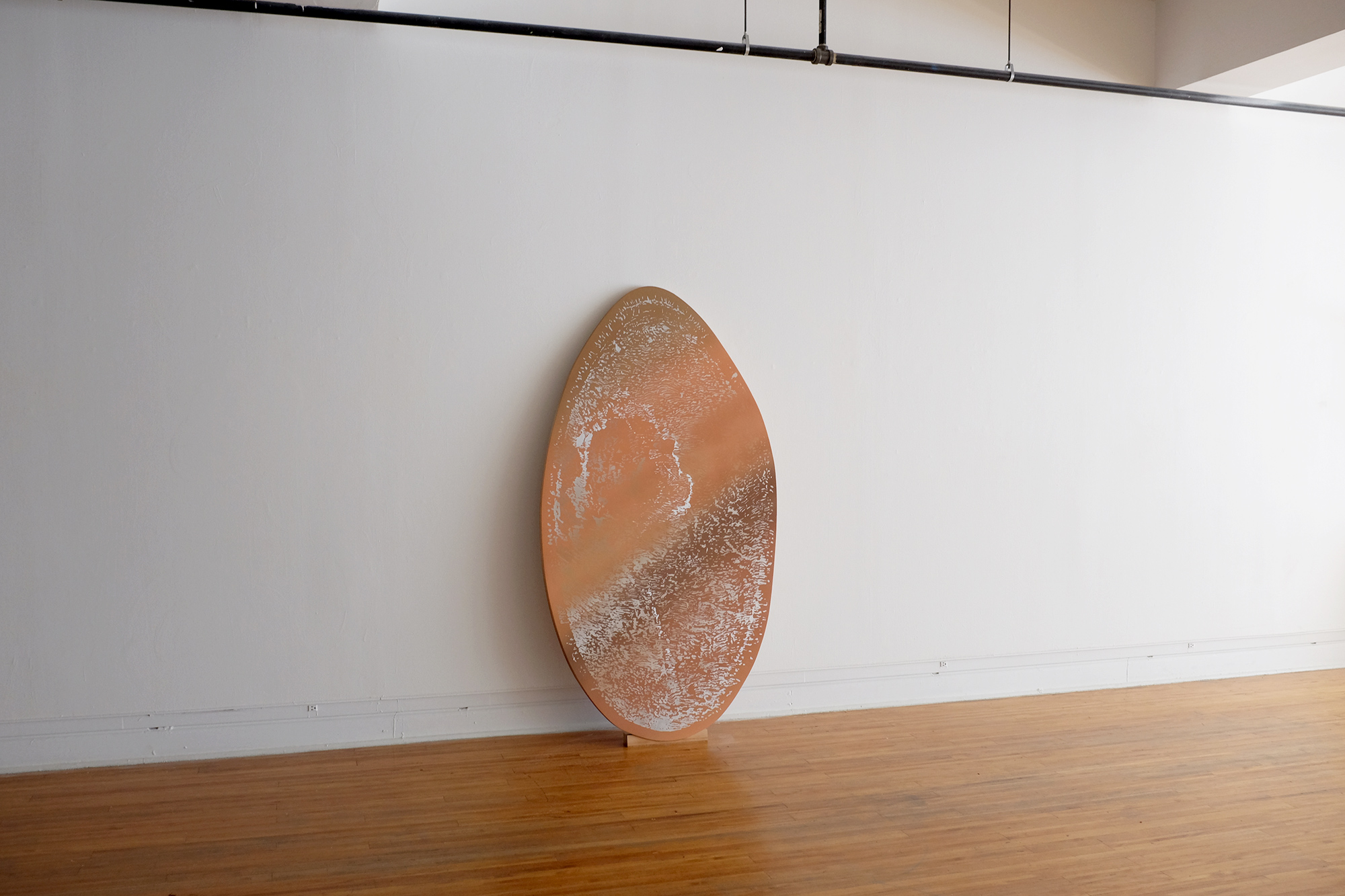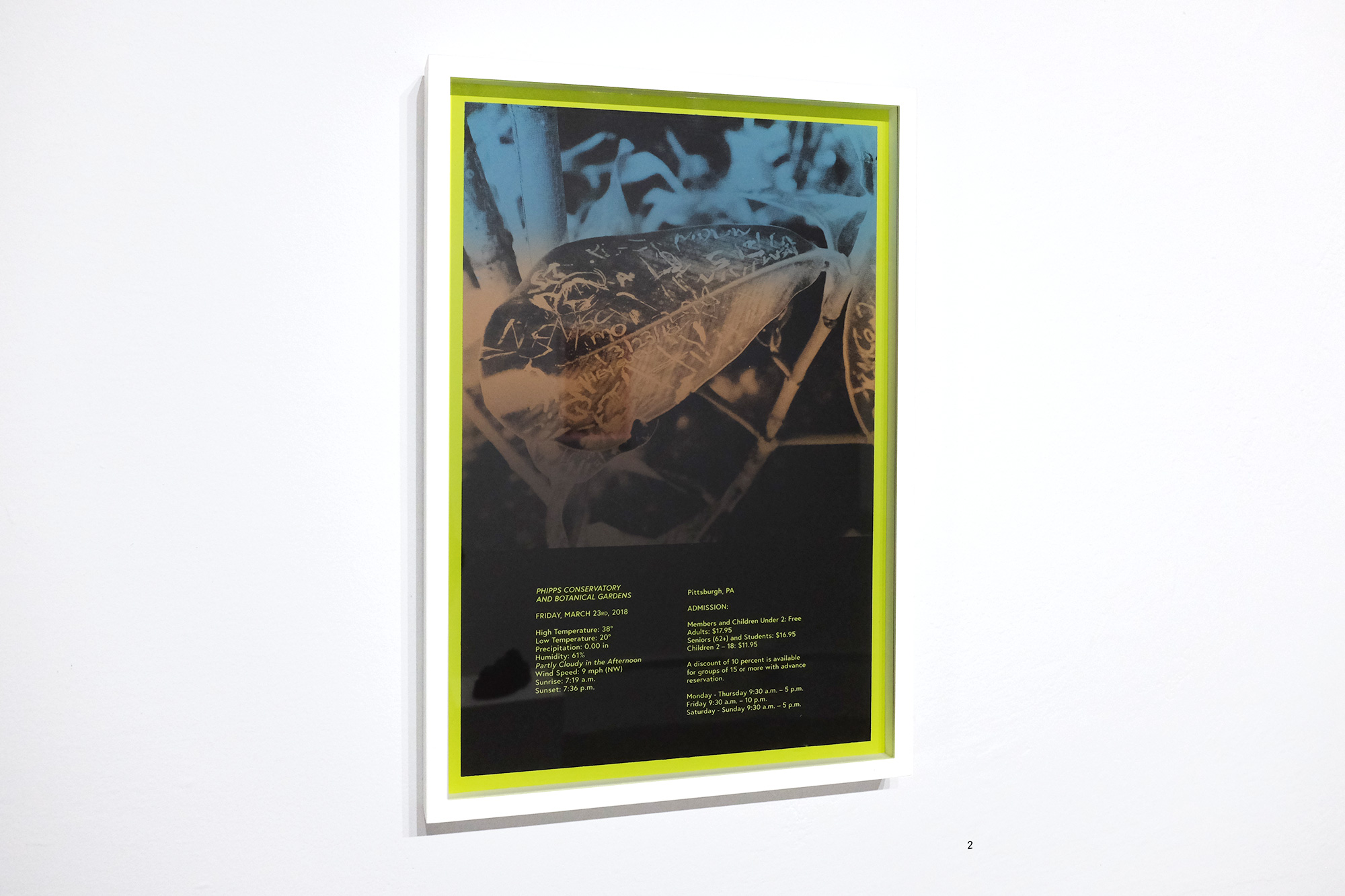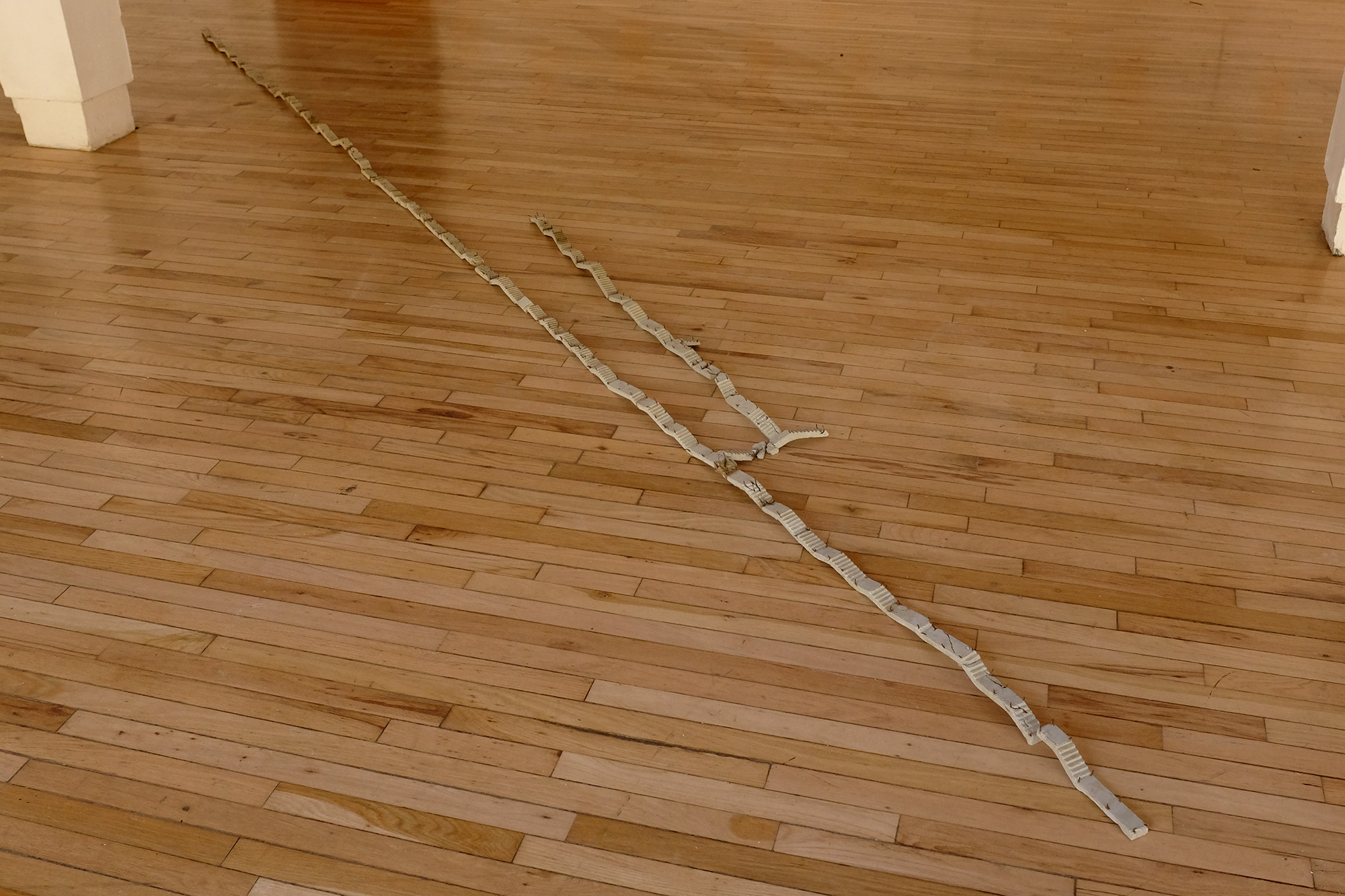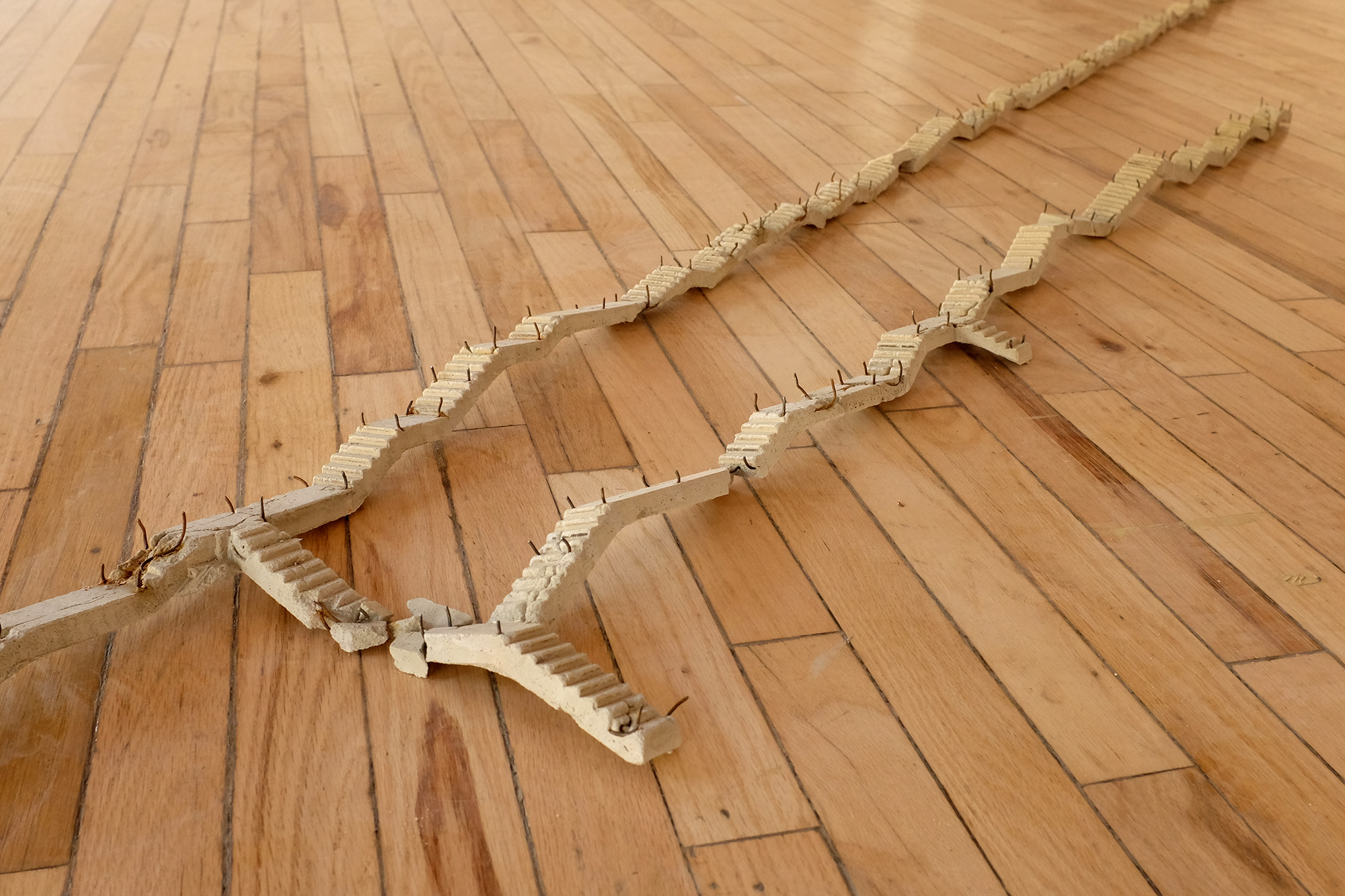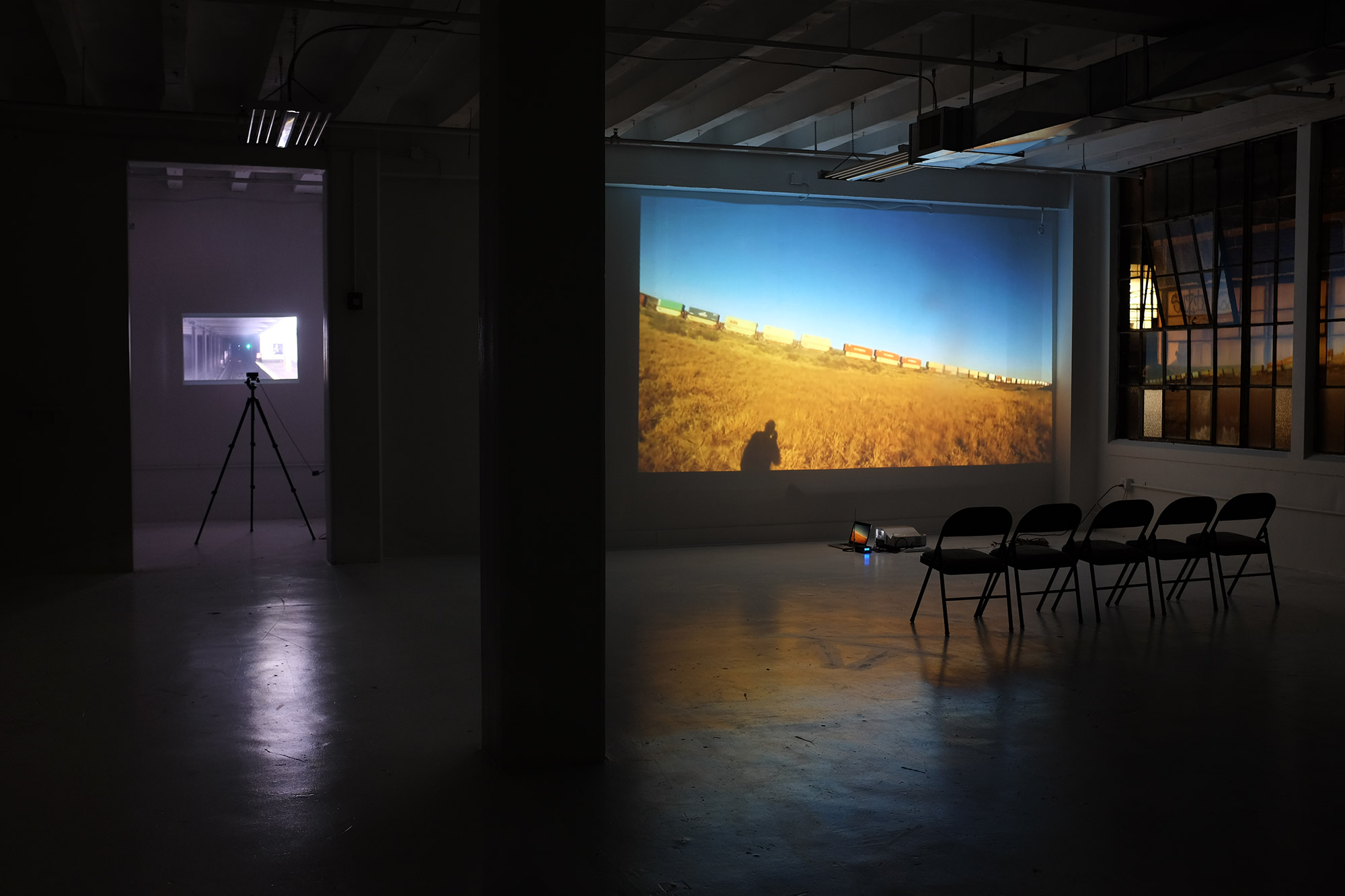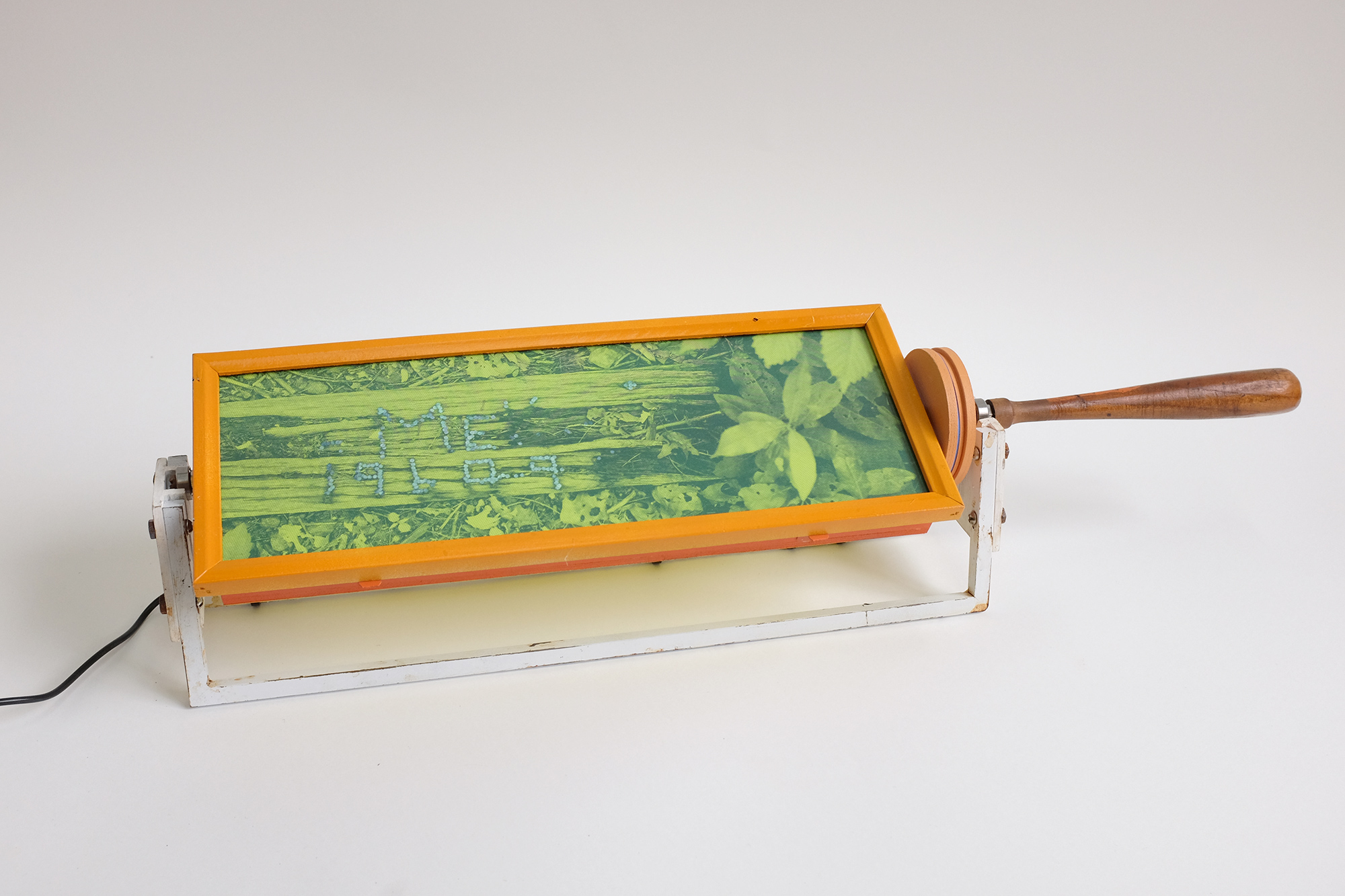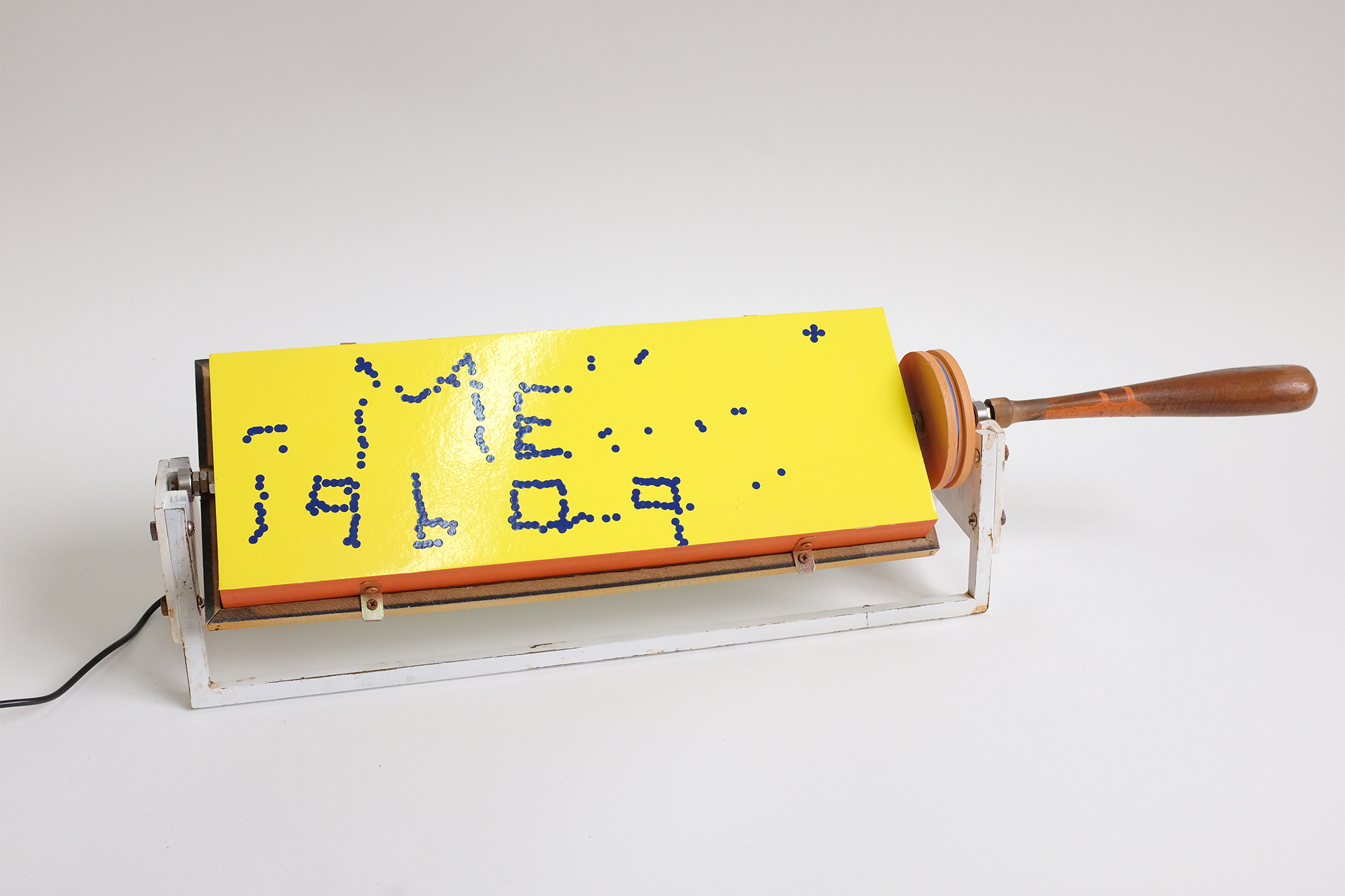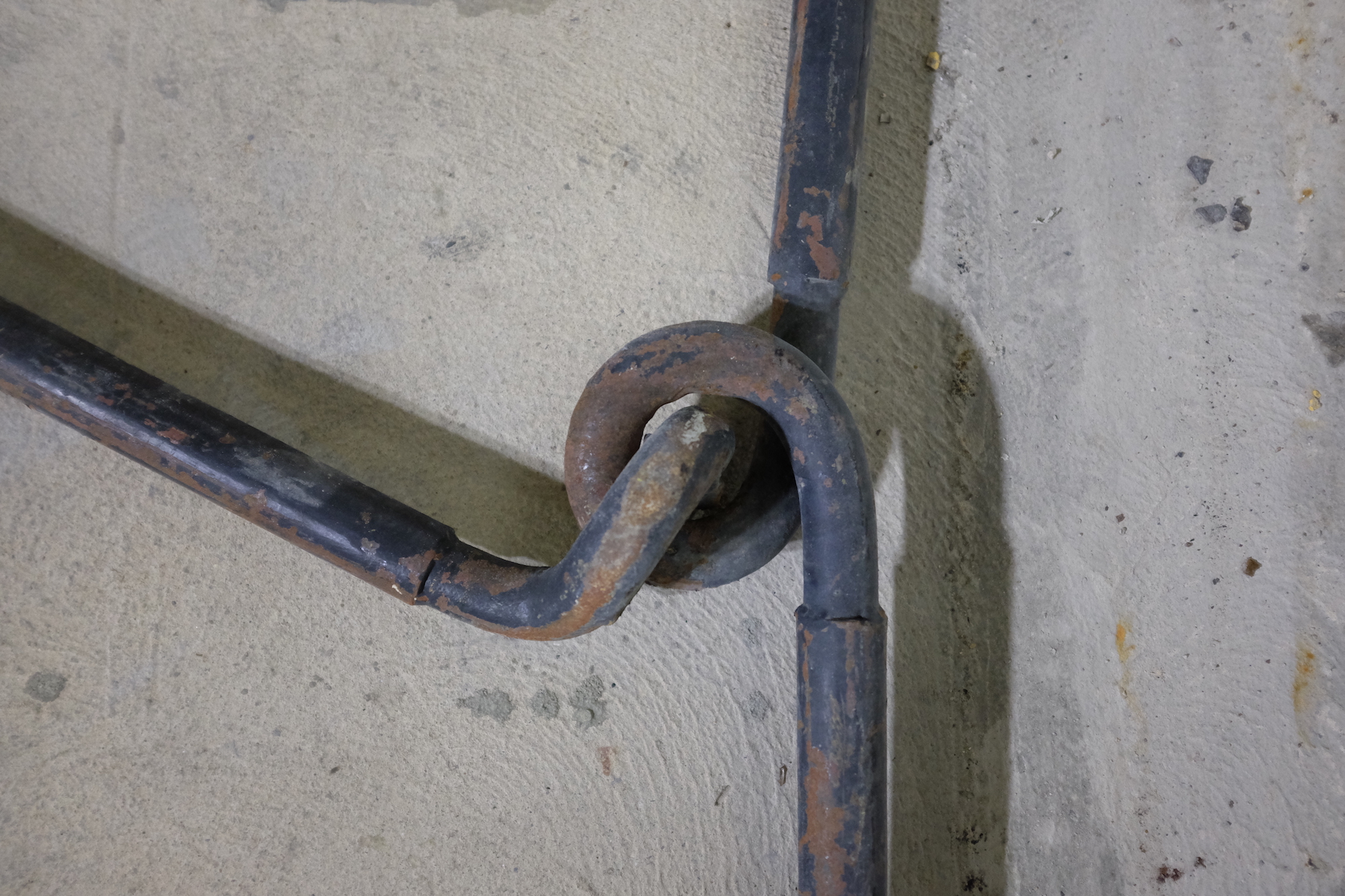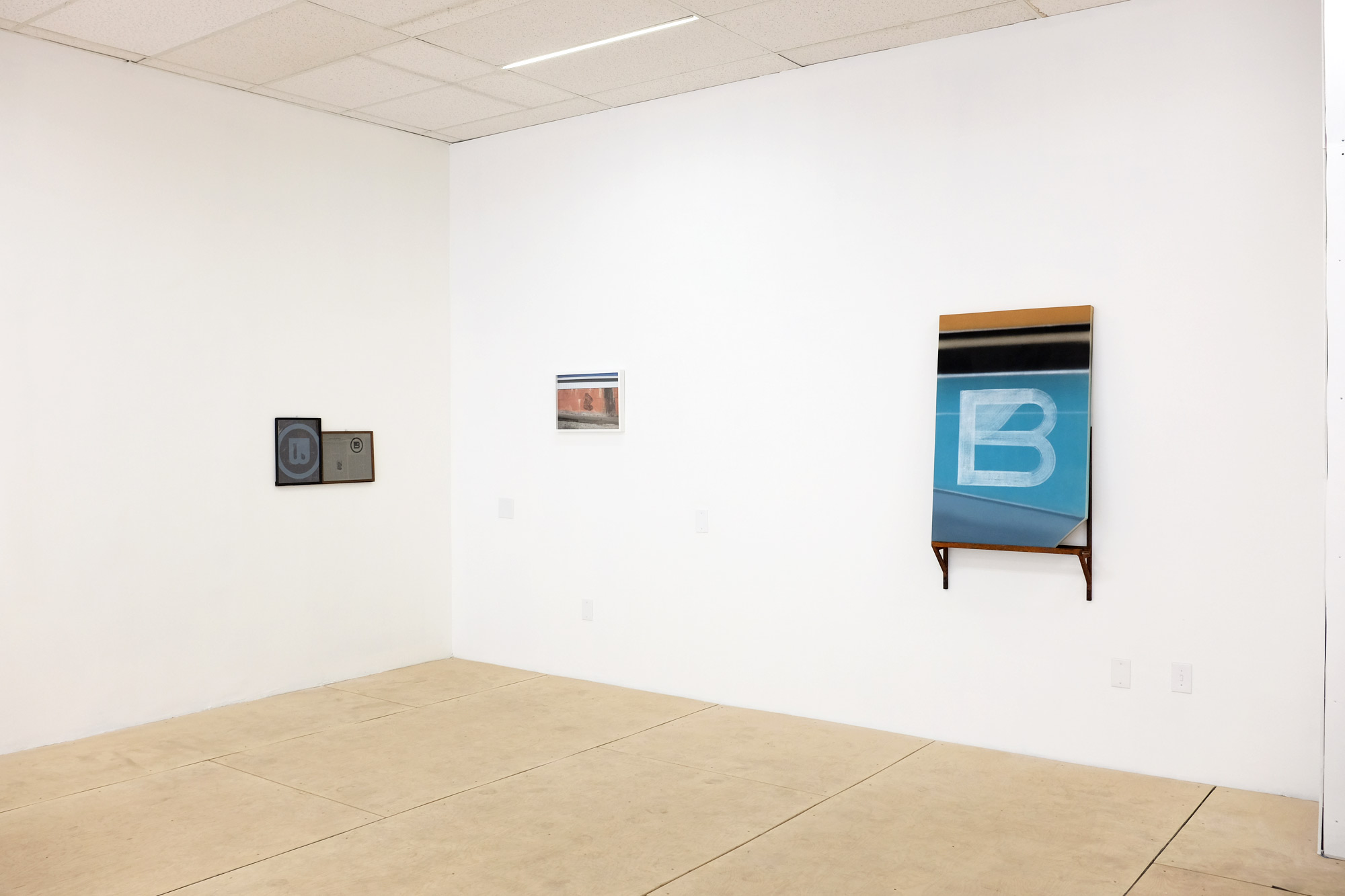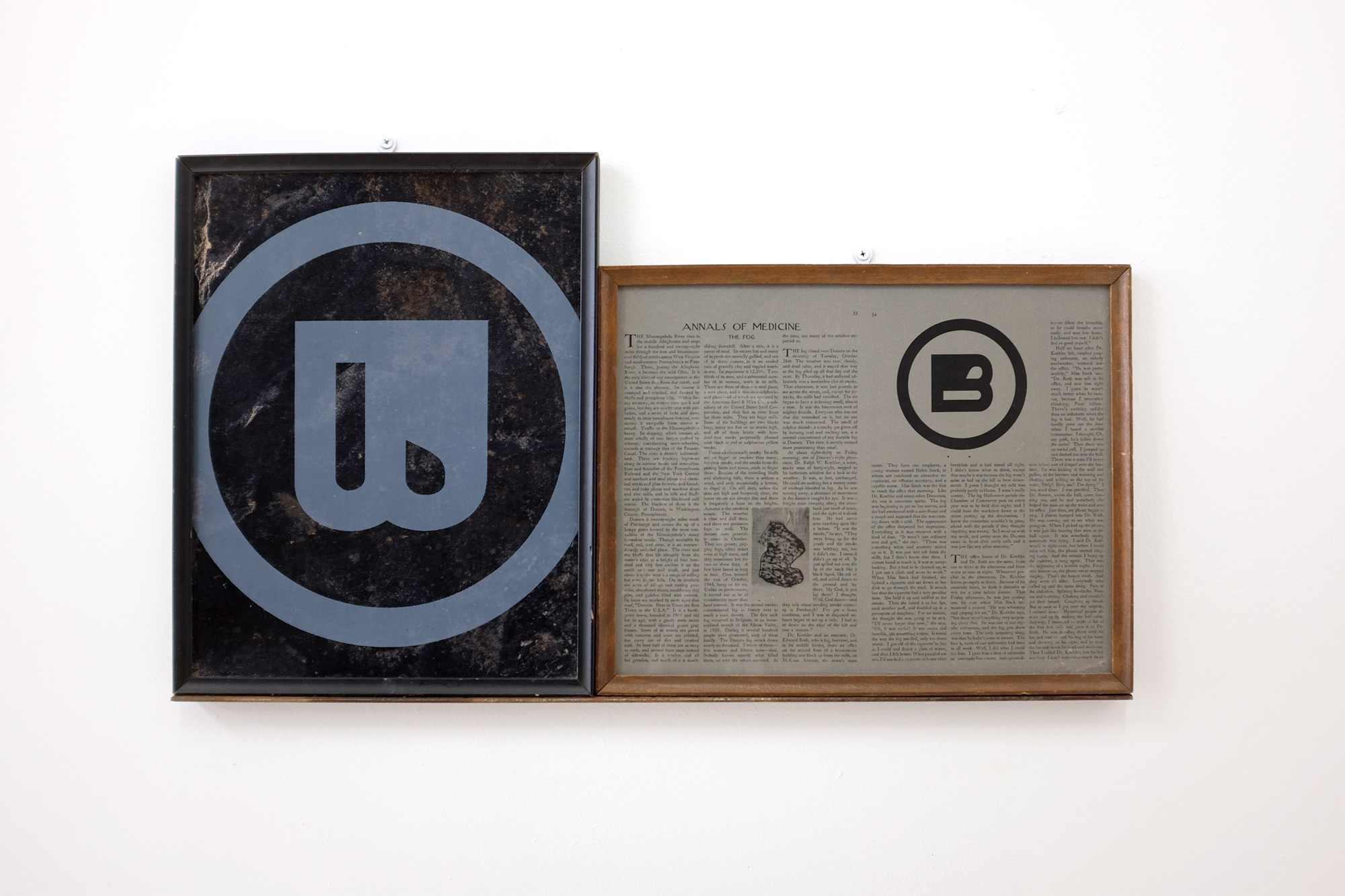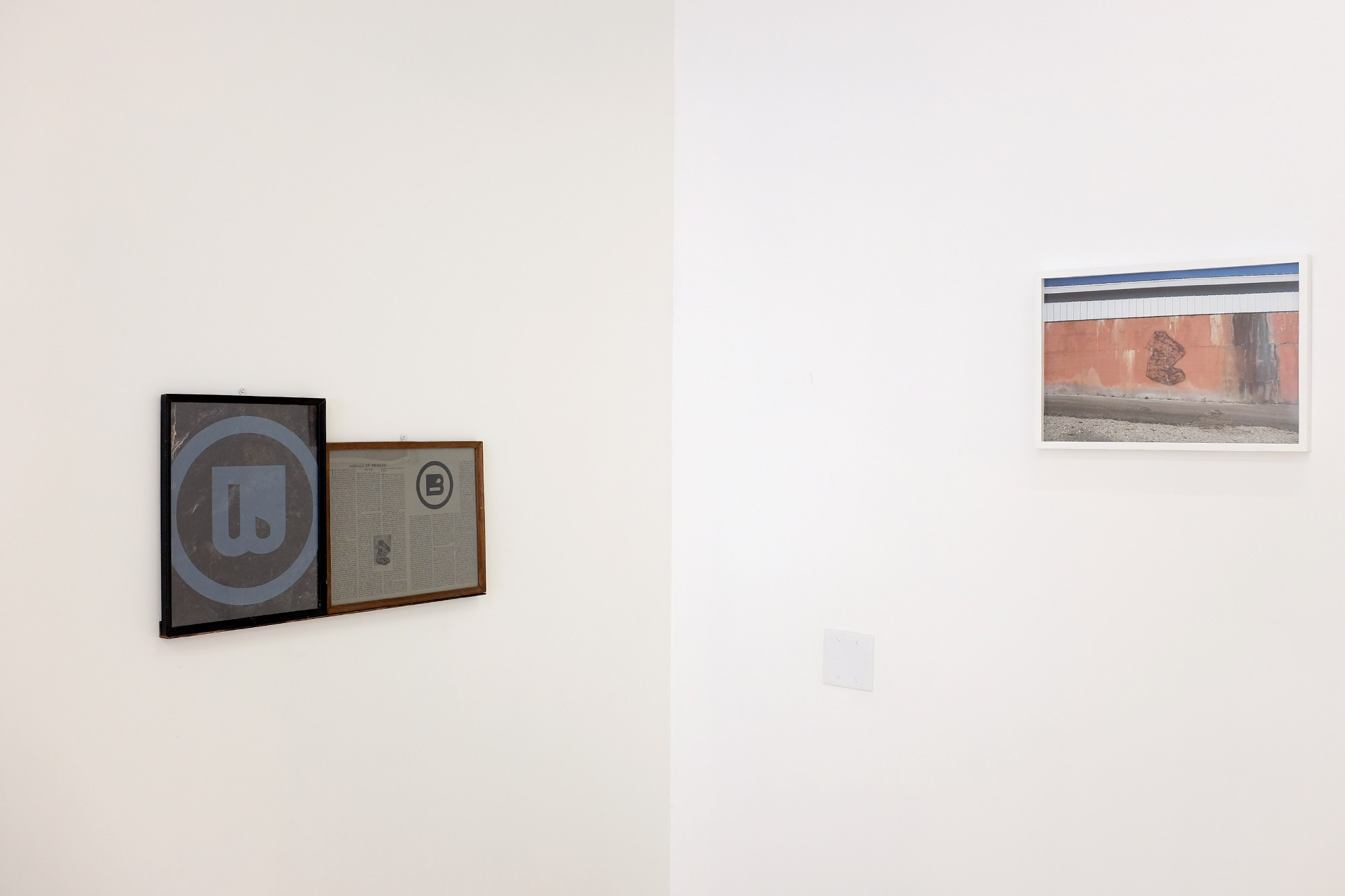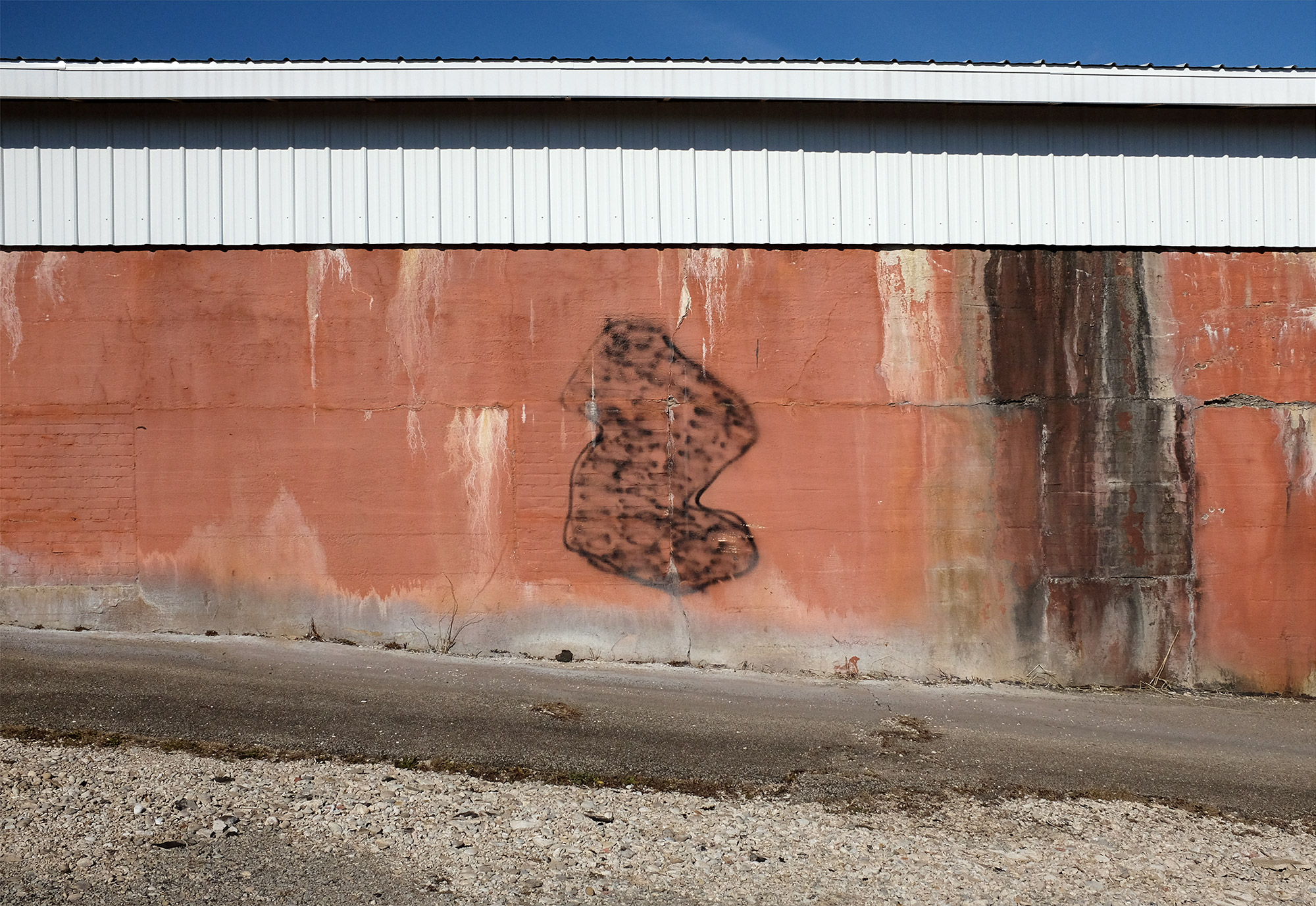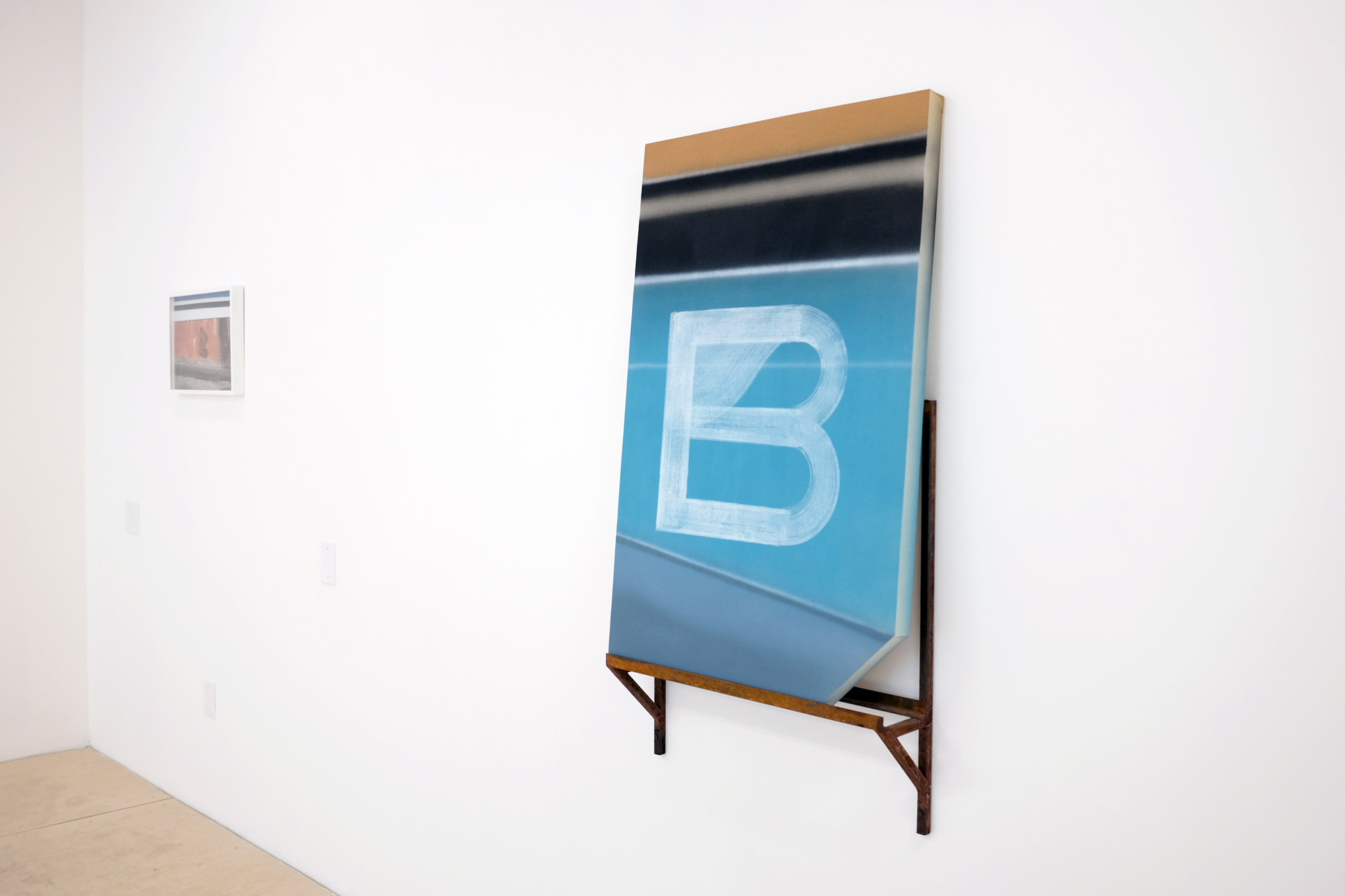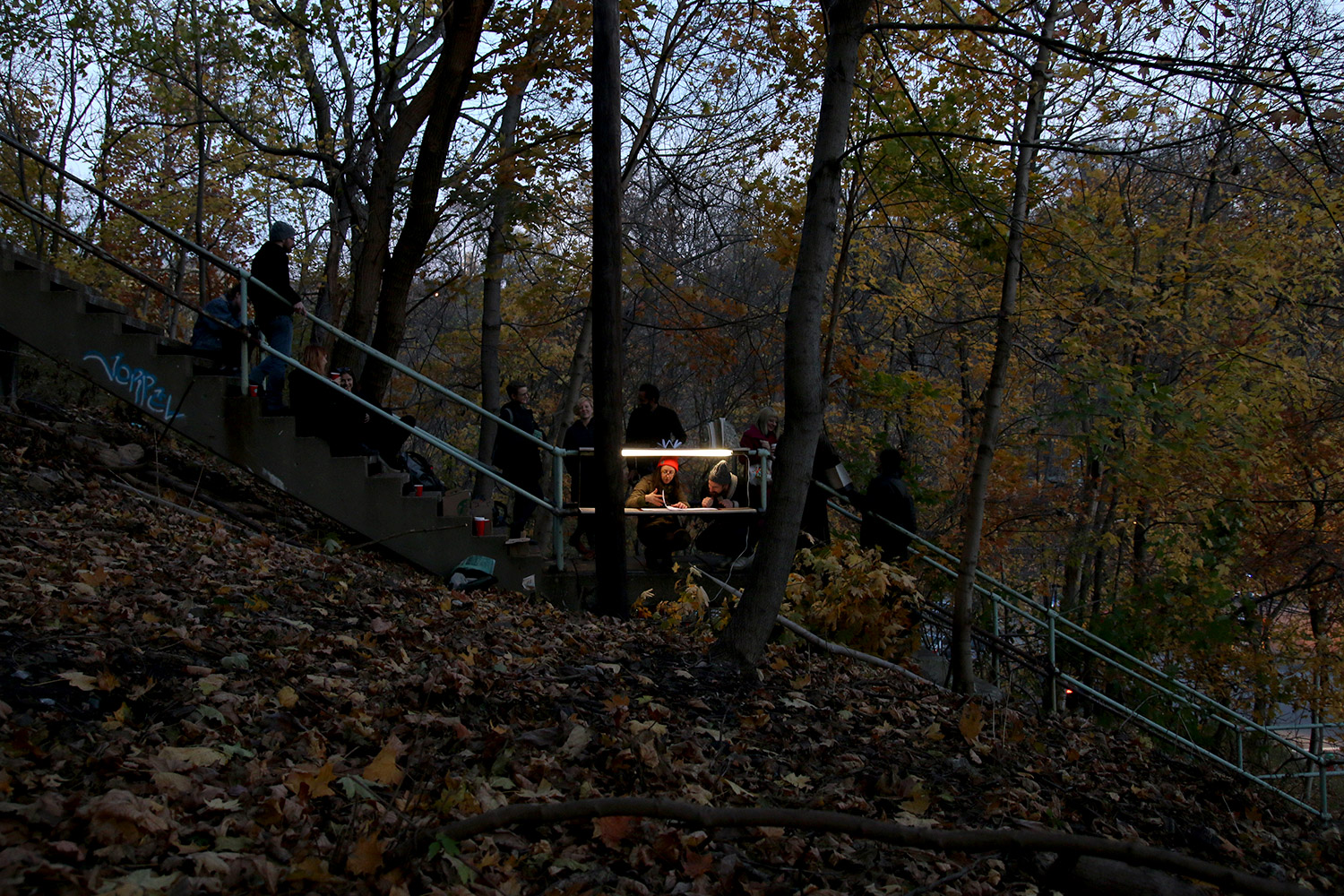ALEX LUKAS
2023 - Now
CA53776V2.gallery
CV FOLLOW
PA 61 (Destroyed) Marginalia, 2018
Three hours due west from New York City sits Centralia, Pennsylvania. The story of this eastern ghost town’s demise has become mildly legendary: in 1962 burning trash ignited a vein of anthracite coal, starting an underground fire that burns to this day, forcing the town’s depopulation. Visiting has become a pilgrimage of sorts for history buffs, ruin-porn vloggers, post-apocalyptic fantasists and those in search of tame weekend rebellion. However, as the iconic smoke emanating from the ground has disappeared and the town’s structures have all been demolished, there isn’t really that much to see in Centralia anymore. People make the trip nonetheless.
Just outside of town, a mile-long stretch of State Route 61 sits abandoned, its surface buckled and cracked by the underground fire. Google Maps lists it as “PA 61 (Destroyed)” but it has been unofficially christened “Graffiti Highway.” Tall dirt berms prevent most vehicles from entering PA 61 (Destroyed), converting it to a space primarily for pedestrians. Images from the mid-aughts show a smoking but monochromatic stretch of asphalt but today the road is a cacophony of color. Crudely written names, quippy messages, simple drawings, love declarations, juvenile vulgarities, twitter handles, and phallus’ abound, completely covering the blacktop.
The amassed language blends into a rainbow archive of those who have visited; an open-source repository of messages left for the next visitors to read and to record while simultaneously contributing their own bright messages. It is a tourist act—a commemoration of a journey, a sign of one’s persistent presence. It becomes a double souvenir — a trace left behind and signal sent forward on cell phone and DSLR videos, multiplying the text of the road through the 93,500 hits on Youtube for “Centralia, PA.”
The explosion of color now expands past the road and onto the abutting maple saplings and sumac bushes - marginalia to the text of the highway. Imbued with fantasy, it’s tempting to imagine these trees sprouting from the underground conflagration and blossoming in new and mutated ways.
The color is synthetic of course — straight from the can. The palette is mostly from the Rust-Oleum corporation of Vernon Hills, Illinois. Distinguished by its yellow “Stops Rust” oval, the brand offers eight blues, eleven browns and seven shades of red. Rival Krylon boasts twenty-six shades of green and nineteen oranges. While boutique spray paint brands are available at many art supply stores, most national big-box chains stock Krylon and Rustoleum, and it’s their colors that dominate in Centralia. A twelve-ounce can retails for around four dollars — a cheap and easy way to alter the natural hues of Eastern Pennsylvania.
Marginalia 4, 2018
Marginalia 5, 2018
PA 61 (Destroyed), 2018
Kizzume Fowler, Published on Jul 26, 2017, 219 views
Centralia, Pennsylvania, 2018
87.5 to 107.9, 530 to 1710, 2017 Fluorescent lights, steel, arduino & relays, sandbags, 56.25” x 60” x 120”
White noise, more white noise, more white noise. He tries the AM bands, then the FM. Nothing. Just that sound, like the sound of starlight scratching its way through outer space: kkkkkkkk. Then he tries the short-wave. He moves the dial slowly and carefully. Maybe there are other countries, distant countries, where the people may have escaped. . . They wouldn’t have escaped though. On November 2nd, 1920 (ninety-seven years and one day before the initial presentation of this work) the world’s first commercial radio broadcast was heard on KDKA Pittsburgh, known then as 8ZZ. Utilizing technology developed by engineer and enthusiast Frank Conrad just a few blocks from the exhibition venue, the voice of Leo Rosenberg relayed presidential election results to a rapt local audience before the arrival of the next morning’s newspaper. It was, at the time, a historically speedy conveyance of information.
Today when the radio dial in the car scans endlessly, looping back and forth from 87.5 to 107.9 to 87.5, it indicates that one is “out there”, isolated, driving incommunicado. When the radio signal is removed, it is a sign of distress or dislocation. Witness the jarring tone of the Emergency Broadcast System, a monthly cold war hangover injected into the home. This losing-the-signal has become a trope of post-apocalyptic fiction, a metaphor for societal disintegration epitomized by the absence of pop-connectivity. No more news and weather on the tens. No more top 40. No more pledge drives. This removal of information becomes a slowing, a breakdown, a reversion to an uncomfortable pre-technological age.
87.5 to 107.9, 530 to 1710 explores the space of this breakdown. Interrogating the aesthetics of radio both historically and in speculative post-apocalyptic futures, this work examines removal of the lifeline provided by terrestrial broadcast. Utilizing the format of the digital display, an efficient form capable of replicating the English alphabet, select punctuation, and digits 0 - 9, 87.5 to 107.9, 530 to 1710 presents relics of radio in an imagined future. This work was supported in part by funding from the Carnegie Mellon University
Frank-Ratchye Fund For Art @ the Frontier.
880 WCBS, 2017
780 WBBM, 2017
A Rock, A Rock Painted to Look Like A Rock in Zzyzx, 2017
Hanno Falk (Published on Nov 15, 2009),
Full Audio:
WRITTEN NAMES, A fanzine dedicated to occurrences of localized, unsanctioned public name writing.
Issue #1: WRITTEN NAMES #1: Names Written in Nails Embedded in Railroad Ties, Cambridge, Massachusetts.
(Written Names Fanzine documents hyper-localized occurrences of unsanctioned public name writing. Each issue focuses on a single site, chronicling and augmenting these shared experiences of place, history, tourism, and localized assertions of identity through documentation, research, transcription, and design.)
Issue #2: Names Written in Rocks Along Rt. 66, Amboy, California.
Issue #3: Names and Dates Carved into Bamboo, San Marino, California.
WRITTEN NAMES #4: Initials Carved into Cacti on Enchanted Rock, Llano County, Texas.
World Trade Center, New York, NY. Montvale Rest Stop, Garden State Parkway, Montvale, NJ, 2016
Abraham Lincoln is as near to a secular deity as America possess. His likeness has become both ubiquitous, with over 9 billion one-cent pieces minted in 2015 alone, and highly disposable, as in the mildly popular form of the squished commemorative penny. This low form of souvenir operates as a print-on-demand memento and keepsake, as well as a desecration of presidential portraiture. Its creation at once destroys the monetary value of the coin, while simultaneously imbuing it with the nostalgia of tourism. Available at rest stops and gift shops, these pennies commemorate visits to everything from the banally grand “World's Largest Truck Stop - Route 80, Indiana” to the death of “Ford’s Theater” and “The World Trade Center,” imposed upon Lincoln's quotidian bearded profile.
World's Largest Truck Stop, Interstate 80, Wallcot, IA, 2016
Ford’s Theater Commemorative Squished Penny, Maryland House, Interstate 95, Aberdeen, MD, 2017
Forum Novelties Inc. Item # 63767 (Lincoln), 2017 Plastic mask with 16 minute audio, 7.75” x 12.25” x 6”.
"All the elements I love, outdoors, fun colors, IG worthy pictures, and vandalizing private property," 2018
Art by Bones, Published on Nov 8, 2017, 115 views
3/23/18, Pittsburgh, PA, 2018
6/14/02, Pittsburgh, PA, 2018
103.5 FM, Brady’s Bend, PA, 2017 A subterranean radio network broadcasting competing apocalypse survival shelter advertisements on three FM transmitters. As the audience walks through and around the transmitters and receivers, their bodies block and disrupt the broadcast of each track, allowing the various narratives to overlay, dissolve and intermingle. The radio transmission was available on 103.5FM only while underground in a Western Pennsylvania limestone mine. (Made in collaboration with Everest Pipkin)
Rising Main Avenue, 2017
Walk-In Movies Presents: Hey Railfan! Focusing on the railroad as both the site of liminal cohabitation and the setting for subversive performativity, Hey Railfan! presents Youtube videos of subway surfing and train hopping, explores the subway as cooperative canvas and examines the railbed as the site of mourning. Each iteration of Walk-In Movies presents a selection of thematically related videos projected simultaneously across multiple channels. Audio for each channel is broadcast on small FM transmitters within the screening venue. Audience members bring headphones and are supplied small FM radios allowing them to move from screen to screen at their own pace, tuning into the audio for the video front of them, a local radio station, or really whatever soundtrack they'd like.
MORE/a>
- ME . . . . * 1960_ 9 . . Cambridge, Massachusetts, 2017
Art Deadlines List (Published on Dec 9, 2007 & Jan 22, 2008),
Immobile Mobile for Eight Hanging Banners, 1975 - Present
Collection of Equity Commonwealth
Shortly before his death in 1976, Alexander “Sandy” Calder was invited to create a series of large, colorful banners for a new development at 1500 Market Street. Along with Claes Oldenburg’s Clothespin and Jean DuBuffet’s Milord La Chamarre, Calder’s banners were commissioned for Centre Square as part of the Philadelphia Redevelopment Authority’s Percent for Art Program. After several years on view in the lobby, the banners were removed in the early 1980s, ostensibly for cleaning, stored in plastic bins, and subsequently lost somewhere in the office building. They were rediscovered and temporarily re-presented at the Free Library in 2009.
Immobile Mobile for Eight Hanging Banners was originally fabricated as a steel mobile armature from which to hang Calder’s banners, but was moved to the Centre Square parking garage after being deemed too heavy for the atrium roof. The banners were ultimately displayed using an alternative hanging method. Indicative of the artist’s signature bent-wire forms, the work is in many ways more representative of the artist’s oeuvre than the banners it was designed to support. Sitting since 1975, the sculpture has served as a permanent space-saver in a second level sub-basement parking garage purgatory.
Immobile Mobile for Eight Hanging Banners rests today as an obstacle. It inhibits retrieval of a 16’ ladder and encumbers access to pallets of paving stones. It once fell victim to a wayward yellow paint striping crew and has witnessed a boxed-wine-fueled bacchanalia or two. It is an immobile mobile amongst the automobiles.
(Immobile Mobile for Eight Hanging Banners is in collaboration with Leah Mackin as DBQ)
"B", Donora, PA, 2016
USXB // The Fog, 2016
Foggy "B", Donora, PA, 2016
"B" Inversion, 2016
A Transcription of the Joncaire Street Steps, 2015
In anticipation of the purported demolition and replacement of the Joncaire Street Steps in Pittsburgh’s Oakland neighborhood, DBQ presents A Transcription of the Joncaire Street Steps. Equal parts archive and crowd-sourced poem, this publication records the marks that have been made by some of those who have traversed the 136 steps connecting Panther Hollow to Central Oakland. Described by a PennDot spokesperson as “deteriorated”, the Joncaire Street Steps are one of over 700 sets of municipal stairs connecting sections of Pittsburgh too steep for vehicular traffic. The City of Pittsburgh has received $384,000 of federal funding from the Transportation Alternatives Project (TAP) to replace the Joncaire Street Steps, with plans to to begin construction in 2016
On Friday, November 20th, DBQ hosted a publication release event on the Joncaire Street Steps. In conjunction with the event, related readings from the nearby Carnegie Library of Pittsburgh were collected to form the second volume of another DBQ project, Open Stacks. The books were available for visitors to peruse during the reception.
(A Transcription of the Joncaire Street StepsIn collaboration with Leah Mackin as DBQ)
|
